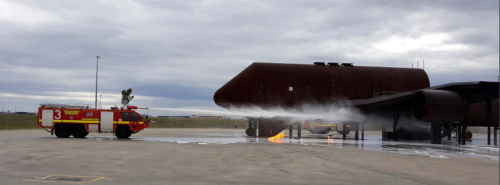Summary
COVID-19 presented an opportunity to review HSEC and organisational responsibility through
systematic enhancement to the collection, storage, and integration of critical asset data.
The project involved Jacobs and Airservices Australia working collaboratively to co-design
a scalable data capture approach and asset information assessment framework.
Jacobs employed innovative tools for realtime data capture and translation into functional dashboards to visually communicate crucial asset information. The project was initiated with a Victorian pilot project, which demonstrated excellent value to the overall asset management, resulting in roll out of the framework to seven sites across four states, with future sites in planning phase.
Use of Best Practice Asset Management
Principles
Through a series of progressive workshops, stakeholders co-developed a scalable data capture
approach and asset information assessment framework using the International Infrastructure Management Manual as a baseline. The project reflected good practice in asset management
principles by assigning a condition score which calculates an asset’s remaining life and provides a risk and evidence-based approach to prioritising operational, maintenance and renewal activities. Airservices leveraged the innovative Jacobs Echo and Jacobs Omni data capture tools and an integrated team structure to comprehensively map Airservices building and infrastructure asset condition scores and criticality ratings across
several sites. The data and information collected was then integrated with Airservices enterprise
asset management systems. The project reflected a strategic approach to converting good practice asset management principles into a framework for the organisation, and then translating this framework into a data capture and analysis program to support decision-making on critical
assets and infrastructure. Degree of originality and ingenuity
of solution The co-creation element of this project makes it inherently original, and the solution bespoke to Airservices’ asset challenges and risks. The Echo and Omni data capture tools are
completely configurable and provided a flexible and innovative response to the reoccurring and
consistent challenges in the asset management space. For this project, the tools provided the foundation for site investigations and were customised to target the building infrastructure
attributes of greatest significance to the Airservices operations.
The forms within these tools were designed for instant and safe deployment to operational teams, allowing quick and efficient logging of asset data in real-time data using smartphones and tablet devices, thereby minimising disruption to site operations. This meant that the ultimate solution, represented by the asset information assessment framework and associated dashboards, was entirely bespoke to Airservices and provided a single source of truth on assets, their condition and criticality, enabling effective decision-making, especially in the time sensitive environment of incident response.
Program and project management
This data capture project was managed as part of a broader program, reflecting a cultural change in the approach to asset management. The program originated with an Asset Information Management Maturity assessment, which considered the relative maturity of Airservices activities across asset information strategy, standards, data and information management, and asset information systems. The maturity assessment identified areas for improvement in data capture, the holistic approach to recording asset criticality, and better integration of information systems that hold condition and criticality data used to inform decision making.
Project Description
This was the catalyst for the data capture project being presented for this award category. The
overall program approach allowed for data integration and relationships across these subprojects to deliver an integrated asset solution. Within the project, a robust project management
approach was needed to manage the multiple stakeholder inputs and site-specific parameters,
including development of a HSE fieldwork pack and security and risk assessment. Representatives were engaged from the asset class core systems (building infrastructure, aviation rescue fire-fighting services, navigation, air traffic services centres, communication, and surveillance), data managers, and asset owners and operators. The project was efficiently established as a trial to ascertain genuine value before committing to
additional sites, which are generally prioritised sites according to operational volume. This staged
approach allowed the project manager to achieve a repeatable process and retain consistency
in resources, resulting in both time and cost efficiencies. It enabled a qualitative comparison
of results across sites, and consistent findings were recorded for assets across the geographies
surveyed.
Benefit/Value of the project or service to the community or organisation
Airservices has elevated its asset management capability to make more informed, evidence based decisions by re-standardising its asset condition and criticality assessment approach. Risk identification and mitigation strategies to support business continuity across a highly diverse aviation infrastructure portfolio have been established and better understood by planning and field services teams. By comprehensively improving asset data accuracy,
Airservices has enhanced its response to climate change and organisational resilience, improved
confidence in investment decisions, and facilitated data integration with enabling digital tools and systems. Ultimately, the project helped reduce the risk of asset fault or failure and associated downtime, resulting in a reduced likelihood of disruption to air services and the consequent impact on passenger and freight movements.
The project has enabled Airservices to achieve a 40% improvement in the process of criticality
assignment for their assets.
Airservices Australia & Jacobs – Building a Modern Portfolio Picture -Airservices Australia’s Facilities Data Capture Initiative / Asset Data Quality Improvement Program

